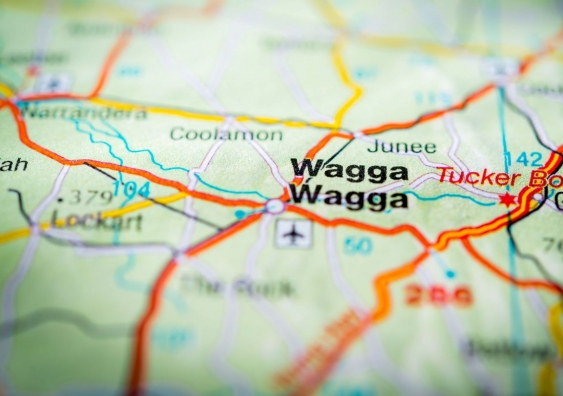Federal funding boost for UNSW Rural Clinical School
The federal government has announced $17 million in funding to expand UNSW's Rural Clinical School in Wagga Wagga to train and retain more doctors in rural and regional Australia.
The federal government has announced $17 million in funding to expand UNSW's Rural Clinical School in Wagga Wagga to train and retain more doctors in rural and regional Australia.

Lucy Carroll
UNSW External Communications
9385 8732, 0402 005 319
l.carroll@unsw.edu.au
The federal government has committed $17 million to UNSW Sydney to develop a new rural medical school program in Wagga Wagga – part of a $74 million investment in the Murray-Darling Medical Schools Network (MDMSN) that will change the way medical students are trained in rural, regional and remote communities.
The capital funding will be used to construct a purpose-built Biomedical Sciences Centre that will provide clinical skills training.
Digital links will be established between the new building, Wagga Wagga Base Hospital, other rural clinical school campuses and UNSW’s Kensington campus.
Announcing the funding in Wagga Wagga today, the Minister for Regional Services and Decentralisation, Senator Bridget McKenzie, said she expected work to begin on the project as soon as possible in 2019.
The new medical school will take in its first students in 2021.
Minister McKenzie said the MDMSN addressed a common concern across rural and regional Australia – attracting and retaining doctors who understand local issues and concerns. Once all medical schools are operating, approximately 140 students will begin their medical studies across the Murray-Darling region each year.
“The current model of medical training, which predominantly happens in the cities, will be turned on its head. The majority of training will happen in the regions and rotations to metropolitan areas for specialist experience kept to a minimum,” Minister McKenzie said.
“The Liberal and Nationals government is determined to provide better access to medical practitioners for people living in our rural areas. This program will allow students in Wagga and across the Riverina to train within their local area.”
Minister McKenzie said the Liberals and Nationals will provide $67 million to five leading universities with campuses in the Murray-Darling region of NSW and Victoria to support medical students who will begin studying from 2021.
Associate Professor John Preddy, Director of Paediatrics at Wagga Wagga Rural Referral Hospital and Head of UNSW Medicine’s Wagga Wagga campus, said the funding will allow UNSW to train country students in Wagga Wagga for their whole training period and support graduating students take on positions as country GPs and regional medical specialists.
“UNSW welcomes this substantial investment from the federal government for medical student training in Wagga Wagga," said Associate Professor Preddy. "This initiative will build perfectly on our success at training medical students in the area for the past 20 years. The proposed new facility on the hospital site will include a state-of-the-art medical training building including laboratories, clinical teaching areas and advanced simulation laboratories.”
Minister McKenzie said students and their communities would benefit from the MDMSN.
“When the students have completed their medical studies and are fully qualified, many will choose to look for work in the Riverina and wider Murray-Darling region which will give a huge boost to the rural medical workforce in those areas,” Minister McKenzie said.
“The Network will maximise opportunities for school leavers and graduate-entry students living in the country and attract those who want to become a doctor in rural and regional areas.
“For a town like Holbrook, which in recent weeks lost its only fully-accredited doctor, the positive outcome is that a student from the district can pursue a medical career while living at home and then practise in Holbrook already knowing the community and its needs.”
The Murray-Darling Medical Schools Network is part of the government’s $550 million 2018-19 budget investment in the Stronger Rural Health Strategy to improve access to health services for people living in regional, rural and remote areas of Australia.
Over the next 10 years, the Stronger Rural Health Strategy will deliver around 3,000 additional specialist GPs for rural areas, more than 3,000 additional nurses in rural general practices and hundreds of additional allied health professionals.